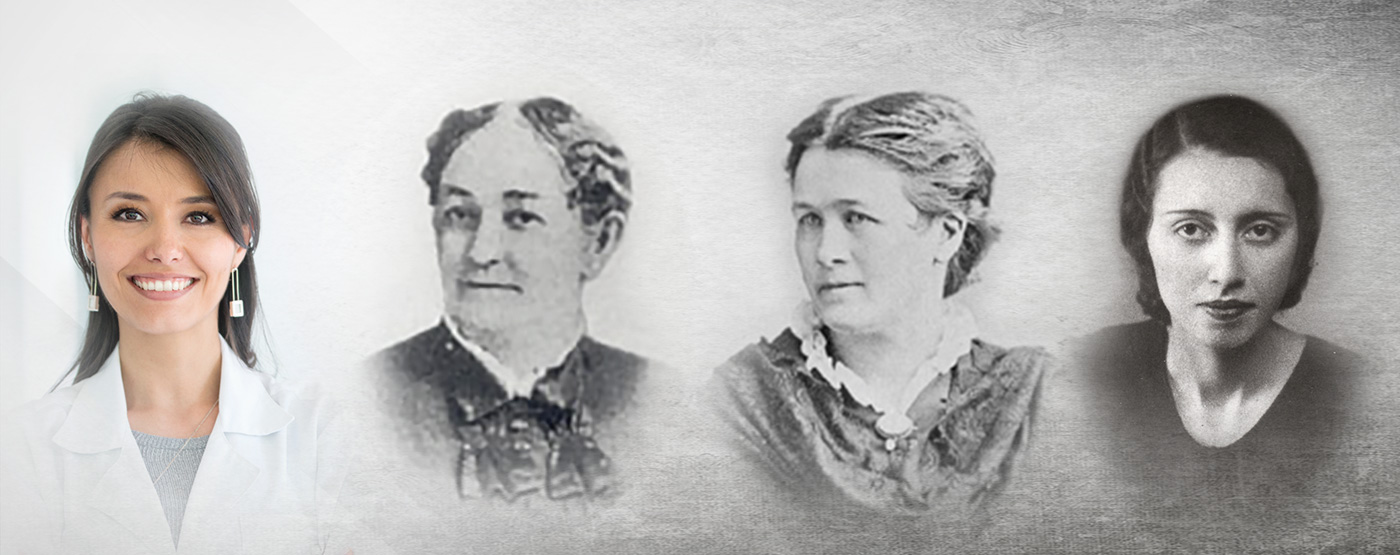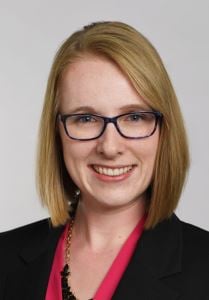Women in Dentistry: Celebrating Women’s History Month

Just because the patron saint of dentistry is a woman, doesn’t mean women were set up to succeed in the profession. Maybe the fact that Saint Apollonia had her teeth ripped out in 249 AD set the tone for the struggles and prejudice women would face over the next 1,500 years as they fought to be educated in the field and practice in their own right.
Special Exceptions and College Rejections
In 1814 in Estonia, Josephine Serre was the first woman to receive a degree in dentistry. Her success triggered, if not a wave, then a ripple across Europe and America. Her own daughter received her dental degree from the same university 15 years later. In 1852, Amalia Assur had to get a special exception from Sweden’s Royal Board of Health to practice, making her the first female dentist in the country. It would be almost another decade before Sweden would officially open the profession to women.
In 1855, Emeline Roberts Jones became the first practicing female dentist in the United States. Though Jones’ husband, also a dentist, was very concerned if her “frail and clumsy fingers” were suited to dentistry. Yet, somehow, she was able to practice for 60 years, eventually being named an honorary member of the National Dental Association. In 1866, Lucy Hobbs Taylor became the first woman to receive a DDS. At the time, she was initially denied entry into the Ohio College of Dentistry due to her gender, however, she persisted and eventually obtained her degree in dentistry. By the year 1900, almost 100 women had followed in Hobb’s footsteps, pursuing a dental career.
Back in Europe, Henriette Hirschfeld-Tiburtius became the first female dentist in Germany in 1869. Like Hobbs, she was denied entry to the local dental schools. In fact, she had to travel to America to earn her degree from Pennsylvania College of Dental Surgery. She is also recognized as the first woman to take a full college course in dentistry, as her predecessors all received credit for their time in dental practice before attending college.
Suffrage and Diversity
By the late 1800s, more women around the world were taking a stand and pursuing their passion for oral healthcare. The concept of a woman’s right to practice dentistry and a woman’s right to vote were even becoming closely tied when suffragist Jennie Kollock Hilton became the first woman to graduate from the University of Michigan’s dental program in 1881. She was passionate about defending women’s right to pursue a career and held up her own dental degree as proof women could handle the rigorous training and be successful working outside the home.
Another alumna of University of Michigan College of Dentistry, Ida Gray Nelson Rollins, was the first Black woman dentist in the United States in 1890. She attended segregated classes and was one of only three women in her graduating class, yet while practicing she was known for treating both Black and white patients.
The momentum that had started in Europe and spread to North America was reaching even further around the world. Across the Pacific, Margaret Caro became the first woman to be listed on the Dentist’s Register of New Zealand in 1881. A few year later, Margarita Chorné y Salazar was Mexico’s first woman dentist in in 1886. It would be nearly another decade before the first woman—Lilian Lindsay—would be qualified as a dentist in the United Kingdom, and in other parts of the British Commonwealth, Emma Gaudreau Casgrain became the first woman in Canada to be officially admitted to the profession of dentistry in 1898.
In Asia, Tabitha Solomon become only the second practicing dentist in India in 1928. Though Iran wouldn’t have its first female dentist, Badri Teymourtash, until 1965, she made a huge impact on the field of dentistry in that country. Teymourtash cofounded Mashhad University’s School of Dentistry with Dr. Esmael Sondoozi, later becoming the first female dean of a dental school and is known as the “Mother of Dentistry” in Iran.
Founding Mothers
For almost a century, women had been fighting hard to prove themselves in the field of dentistry. Many had earned the right to attend school alongside their male colleagues and were gaining respect in the field, though it was still a struggle. Recognizing the importance of mentorship, networking and access to resources, several women took it upon themselves to found professional organizations, several of which that are still in existence today. First, in 1892/93, Mary Stillwell-Kuesel founded the Women’s Dental Association of the U.S. Later, in 1914 Drs. Gillette Hayden and Grace Roger Spalding founded the American Academy of Oral Prophylaxis and Periodontology along with 18 charter members. Today, the Academy is known as the American Association of Periodontology.
Despite strides taken by these founding mothers at the turn of the century, it wouldn’t be until 1920 that the American Dental Association (ADA) would record Maude Tanner as its first female delegate. Only a year later—during the ADA’s Annual Meeting—a dozen women dentists took it upon themselves to create the Federation of American Women Dentists. The Federation would later be renamed the American Association of Women Dentists (AAWD). AAWD’s first president, Minnie Evangeline Jordon, had been the first dentist in the United States to specialize in pediatric dentistry in 1909. To this day, pediatrics is one of two specialties female dentists tend to gravitate towards.
From Founders to Leaders
Like many professions, dentistry saw more women entering the field in the 1970s. This was due partly to changing social norms, which triggered a 20 percent increase in women enrolling in dental schools.1 What started as a ripple more than a century earlier become a wave as more women not only entered dental school and became doctors but took leadership positions. In 1975, Jeanne Sinkford became the first Black woman to be named dean of an American dental school at Howard University. Nancy Goorey was named the American Dental Education Association’s first female president in 1977, but the ADA wouldn’t have its first female president until 1991. Globally, Michele Aerden was elected president of the FDI World Dental Federation in 2005. Surprisingly, it wasn’t until 2013 that Gayle Glenn was elected as the first female president of the American Association of Orthodontists, though orthodontics is the other specialty that sees more women doctors.
Women in Dentistry Today
Though huge advancements have been taken over the past 200 years, a gap in the US still exists. In 2018, slightly more than 50 percent of students in American dental school were women2 but only 35% of practicing dentists are women.3 In Europe, however, the female dental workforce ranges from 48% (Russia) to 75% (Finland).4 But, in general, women dentists are less likely to own a practice and make less money than men over their lifetime.
Change is on the horizon, though, with more faculty at dental schools trending female;4 many practicing woman dentists agree that mentorship and guidance from women leaders during residency can inspire and encourage the next generation of female dentists. And, based on historical data, the ADA predicts the number of women in the dental workforce will reach 50% in the US in the next few years.6
Despite it all, women in dentistry have come a long way since the art was considered too delicate for their “frail and clumsy fingers.”
1Lyon C, Vallee J. Changes in the academe: women in dental education. J Calif Dent Assoc. 2017;45(1):27-30.
2American Dental Association. Education. American Dental Association website. https://www.ada.org/en/science-research/health-policy-institute/dental-statistics/education. Accessed January 6, 2020.
3American Dental Association. Clinical Resources. American Dental Association website. https://www.ada.org/en/science-research/health-policy-institute/dental-statistics/workforce#:~:text=How%20many%20dentists%20are%20female,2020%2C%2034.5%25%20are%20female. Accessed Feb. 3, 2021.
4FDI World Dental Federation. Special Projects—Women in Dentistry. FDI World Dental Federation website. https://www.fdiworlddental.org/what-we-do/projects/women-in-dentistry. Accessed Feb. 3, 2021.
5American Dental Education Association. Snapshot of dental education 2019-20. American Dental Education Association website. https://www.adea.org/uploadedFiles/ADEA/Content_Conversion_Final/deansbriefing/2019-20_ADEA_Snapshot_of_Dental_Education.pdf. Accessed January 6, 2020.
6Munson B, Vujicic M. Supply of full-time equivalent dentists in the U.S. expected to increase steadily. Health Policy Institute Research Brief. American Dental Association. July 2018. Available from: http://www.ada.org/~/media/ADA/Science%20and%20Research/HPI/Files/HPIBrief_0718_1.pdf.
Contributors

Categories
- Carestream Dental
- Company News
Share





